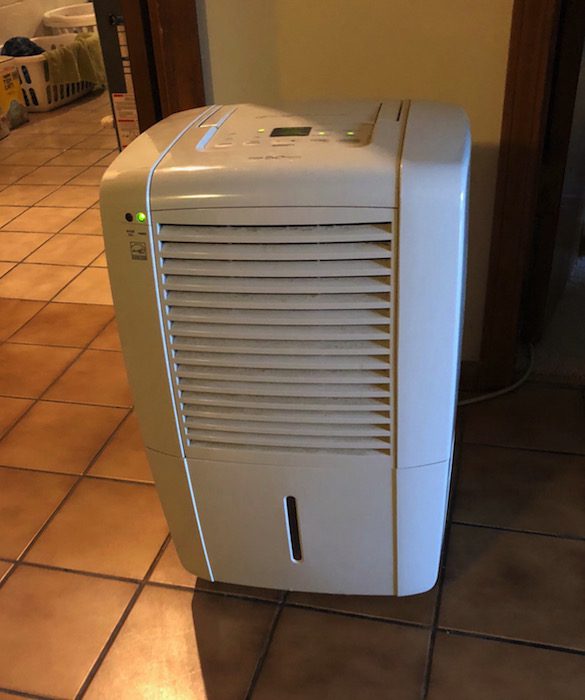Act to Control Indoor Humidity (and Prevent Windows From Fogging Up)

This should come as no surprise – condensation on your home’s windows almost always points toward humid indoor air. While window condensation also may reveal issues with the windows themselves, this isn’t always the case. The fogged-over windows just happen to be where moist indoor air condenses, becoming visible to the human eye. In addition, condensation isn’t as obvious on walls as it is on windows.
Why Do Windows Fog Over?
It all begins with a fundamental principle of physics: Warmer air holds more moisture than cooler air. In most homes, warmer air is likelier to be in a room’s interior than near exterior walls and windows. As air circulates in these rooms, eventually it moves outward, toward the walls and windows. As it approaches relatively cooler windows, the air itself cools down a bit. As a result, it no longer can hold as much moisture. That’s when you start to see condensation on the surface of windows and the frames of doors. If it’s especially cold outside, the condensation may even present as frost. A good tip-off to this issue is when your kids can write words or draw pictures on the windows.
Yet, it’s not just the winter-time when condensation may appear on windows. The windows may fog over anytime the temperatures inside and outside are substantially different from each other. Or if indoor humidity is excessive, you’re likely to find it clammy and damp on all surfaces. This is neither comfortable nor good for indoor furnishings and fixtures.
Make the Humidity Just Right
You won’t get condensation on your windows if the indoor air is dry enough. However, you don’t want your indoor air to get too dry either, especially in the winter when especially dry indoor air is common. Dry air can cause a variety of problems including static electricity (that annoying shock you get when you touch something), dry skin and lips, and cracked wood in furniture and fixtures. If you have a humidifier, you can adjust the setting at an optimum level of relative humidity. It will keep the air dry enough to avoid condensation and moist enough to prevent some of the aforementioned issues.
If necessary during the winter, you can lower indoor humidity by reducing the setting on the whole-house humidifier (if you have one), or in particular rooms if you use portable or room humidifiers. Or just turn the appliance off if you don’t mind dry air. In the summer, use a dehumidifier, whether whole house or portable for certain rooms, to lower indoor moisture. In rooms that are prone to humidity, such as bathrooms and the kitchen, use exhaust fans to remove moist, smelly air. In the laundry room, the dryer exhaust pipe should expel warm, moist air outside. (Make sure that pipe isn’t clogged or vented inside.)
Be Careful About When You Open the Windows
We all enjoy natural breezes wafting through open windows and doors (with screens, of course), but if you do it at the wrong times, you’ll lose your battle against indoor humidity. During warm weather, monitor the relative humidity outside, and keep the windows closed on days when it’s high. If you leave windows open at night to catch the benefits of cool and dry evening air, close them in the morning before the temperature and humidity ramp up. This also will help prevent condensation on your windows. On rainy days, close the house to the outside.
Using Humidifiers in the Winter
As stated, an opposite issue during the heating season from fogged-over windows is air that gets too dry. Forced-air heating dries out already dry indoor air during cold weather, bringing with it a variety of negative effects. Those include a less comfortable home (dry air feels cooler than moist air); dried-out skin, cracked lips, aggravated nasal passages; annoying static electricity; higher susceptibility to indoor allergens and various contaminants that stay suspended in dry air longer; and higher heating bills to counter the cool effect of dry air.
Go With a Whole-House Humidifier
If you do opt for mechanical humidification, consider investing in a whole-house humidifier (and dehumidifier in the summer). These appliances attach directly to the home’s forced-air heating and cooling system. They treat all of the air that circulates through the system in the same way that a furnace filter removes particulates from all the circulating air. With a whole-house humidifier, you can set the dial at the moisture level that you prefer, then sit back and enjoy a more comfortable and healthier home.
But watch those windows. If they start fogging up again, it means you probably need to adjust the dial on the humidifier.
